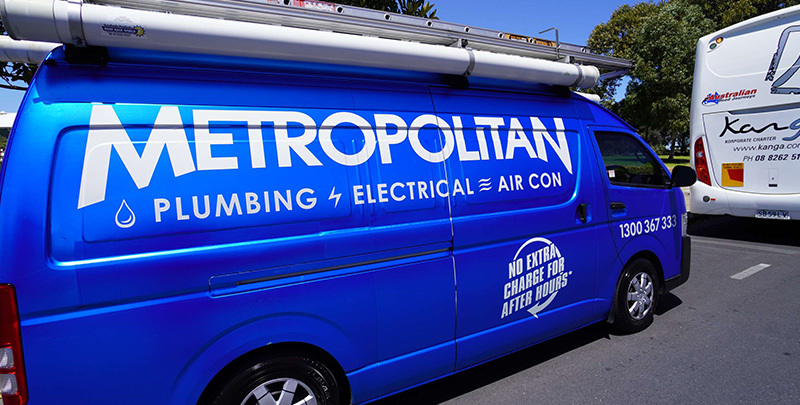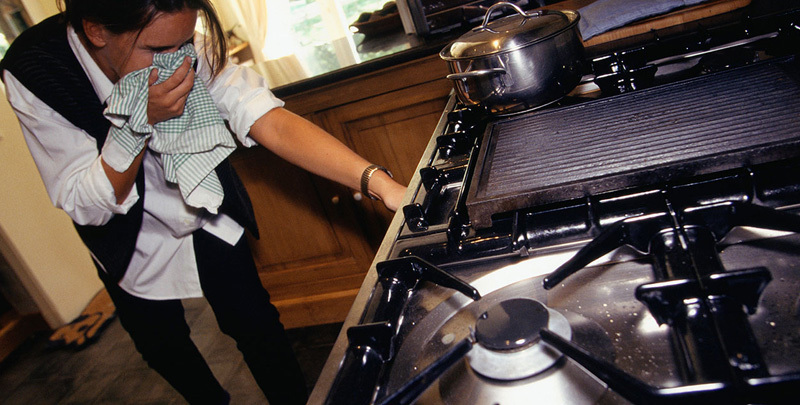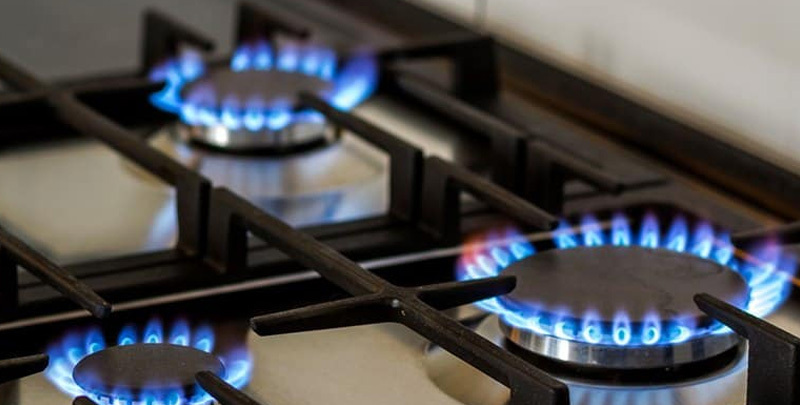
What Causes a Gas Leak?
A whiff of something unusual from the pantry, or the misleading whispering hiss from the gas stove, likely strikes you … something’s not quite right.
You might find yourself wondering, “What causes a gas leak?” You’re not alone – a lot of people ponder the same question.
So, let’s dive in and understand the main causes behind these notorious gas leaks.
Gas Leaks: The Unwelcome Intruder in Our Homes
Gas leaks, in particular, natural gas leaks, pose a significant threat, often transforming harmless households into potential danger zones. The primary reason behind a natural gas leak is the uncontrolled release of gas from an appliance, pipework, or gas tank.
While leakage sources might vary, the risks they pose are invariably grave, including gas explosions, fires, and carbon monoxide poisoning.
How a Gas Leak Occurs
A gas leak is a process that happens when the seal containing gas within the pipes or appliances in our homes or workplaces breaks down. This could be due to wear and tear, faulty manufacturing, or even accidental damage.
These cracks or holes lead to an unintended release of gas that’s usually under pressure within the pipes or appliances. This unfolding scenario is what we commonly term a “gas leak”.
Unfortunately, a gas leak continues until the source of the leakage is identified, isolated, and repaired. That’s why it is always recommended to seek professional assistance when dealing with gas leaks to ensure that potential hazards are appropriately managed and resolved.
What Causes a Gas Leak?
Gas leaks can occur due to a myriad of reasons. Let’s peel back the layers on some of the most common causes.
- Wear and tear: Just like a favourite pair of boots that have been stomped to the moon and back, any device or any gas appliance that uses natural gas can wear out over time. Gas lines and gas appliances can develop cracks and leaks due to weathering or sheer wear and tear. Regular checks can prevent gas leaks stemming from this natural deterioration.
- Faulty gas appliances: We’ve all had that moment with stubborn gadgets, right? Sometimes, gas appliances can throw a fit if they’re not installed correctly or have become faulty over time. These could include appliances like gas stoves, hot water heaters, and other gas-burning appliances.
- Improperly sealed pipelines: Occasionally, gas pipelines might not be properly sealed during installation or maintenance. This can result in gas gradually escaping through these loosely-fitted connections, contributing to the occurrence of a gas leak.
- Physical impact: Physical impacts are another significant cause of gas leaks. Excavation works, landscaping, or other construction activities can inadvertently damage underground gas lines, leading to leaks. This is why it’s so crucial to know where gas lines are located before initiating any digging or construction activities.
- Corrosion: Over time, external corrosion from soil or weather and internal corrosion from chemical reactions can weaken pipelines, leading to the formation of holes or cracks. This mainly affects older pipelines that do not have a protective shell or have an eroded protective coating.
- Equipment failure: Occasionally, equipment designed to control or monitor gas flow could fail. This might include pressure regulators, relief valves, and gauges. Faults or malfunctions in these components can cause an overpressure event, leading to a gas leak.
- Human error: Human errors can play a part in causing gas leaks. Forgetting to turn off the gas stove properly, not adequately securing gas line connections during installation, or accidentally damaging gas lines can lead to leaks.
- Natural disasters: Natural disasters such as earthquakes, floods, or landslides can damage gas pipes or accessory structures, causing gas leaks. These types of leaks can be especially devastating and may require substantial repair or replacement of gas infrastructure.
It’s important to note that regular professional inspections and appropriate maintenance by a gas company can significantly reduce the risk of gas leaks. This ensures that any small issues are resolved before they escalate into more significant problems, such as a gas leak.

Recognising Signs of Potential Gas Leaks
Identifying signs of potential gas leaks early enables quick action. Here’s a heads-up about the tell-tale signs of a possible gas leak:
- Gas leak smell: Ever get a whiff of something that reminds you of rotten eggs? Natural gas is odourless; however, utility companies intentionally add a smell similar to that of rotten eggs to aid in gas leak detection. If you smell gas or something unusual, it’s a potential sign of a gas leak.
- Hissing or whistling sounds: A faint whistling or hissing sound does not always mean an overzealous kettle. Sometimes, this could be the gas escaping from a small hole in the gas line, indicating a gas leak.
- Unusual spots or marks: Sometimes, gas leaks cause unusual spots or discolouration on your walls or ceilings. These marks could be due to deterioration caused by gas leakage over time.
- Presence of bubbles: One tell-tale sign of a gas leak is the presence of bubbles in standing water around the area where gas piping is installed. Since gas is lighter than air, when it leaks into water it creates bubbles as it rises to the surface.
- Dying vegetation: If there is an underground gas leak, the gas seeping into the soil can damage the vegetation above. If you notice discoloured, wilting, or dying plants in a specific area of your garden without a discernible cause, it could signify a gas leak underground.
- Increase in gas bills: If you observe your gas metre or gas meter showing increased gas bills without plausible reasons, it might be due to a hidden gas leak. In this case, it’s essential to get your gas systems checked thoroughly.
- Carbon monoxide poisoning: Feeling lightheaded, nauseous, or getting headaches more often? These signs are similar to the symptoms of carbon monoxide poisoning, a potential by-product of gas leaks.
- Physical symptoms: Besides the signs of carbon monoxide poisoning, other physical symptoms might point towards a gas leak. These may include irritation in the eyes and throat, breathing difficulties, feeling dizzy or tired. Remember, prolonged exposure to gas leaks can have severe health impacts and should be addressed immediately.
As always, if you identify any signs of a potential gas leak, practise natural gas safety. Evacuate the area and contact professionals to handle the issue.

In Case of Suspected Gas Leaks
If you suspect a gas leak, the first and foremost thing is to ensure safety. Avoid using electrical appliances, naked flames, and even refrain from flicking those light switches, as they could ignite the gas. Walk away from the leak to a safe location, and importantly, call emergency services immediately.
Once you’ve reported the suspected gas leak to the local fire department, ring up a certified inspector. Gas leaks require professional intervention for safe and effective handling. Emphasising once again, trying to DIY a gas leak fix isn’t a good idea.
Preventing Gas Leaks
Now that you know what causes a gas leak, how about some tips to prevent gas leaks? Regular maintenance, especially yearly inspections of all the gas appliances, is a significant first step. Similarly, wear and tear needs to be routinely monitored and addressed, and any necessary repairs done promptly.
Installing carbon monoxide detectors in your home is another crucial preventative measure. Just like cricket pads protect against a nasty hit, these alarms safeguard by providing early warnings of natural gas leaks.
To a Safer Home
Understanding what causes a gas leak enables us to stay vigilant, take prompt action, and prioritise safety measures. Whether resulting from wear and tear, faulty appliances, or human error, gas leaks are a serious and preventable risk.
Remember, if you notice any sign of a gas leak, reach out to a professional immediately. It’s not about taking a punt – it’s about protecting your home and family. Play it safe, folks!
Please note: This information is provided for advice purposes only. Regulations differ from state to state, so please consult your local authorities or an industry professional before proceeding with any work. See our Terms & Conditions here.
Published: 2023-12-19

















